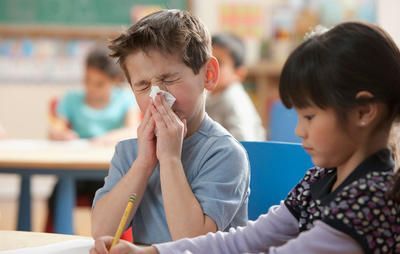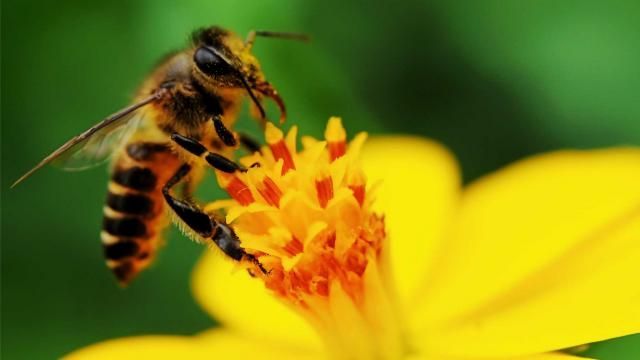Blogs
In honor of National Asthma and Allergy Awareness month, we will share a series on food allergy focusing on everything from myths to personal stories of dealing with food allergy. Today we have a story written by Michele Benyue about her experience with a food allergy emergency.
In honor of National Asthma and Allergy Awareness month, we will share a series on food allergy focusing on everything from myths to personal stories of dealing with food allergy.

Prior to becoming a mom, I was pretty sure that I would be calm, cool, and collected about my kids’ health. After all, I am a board-certified pediatrician and allergist. So, when my picky son (we will call him Mini P) was 9 months old and FINALLY ate a few bites of eggs and then refused to eat any more, I thought it was no big deal. When he got fussier and fussier over the next few minutes and just wanted to be held, I thought he was tired from a long day at daycare. When my husband looked at him and said, “he looks blotchy, and is he itching his ear?” I brushed him off. When Mini P refused his bottle, I figured he was overstimulated and brought him to his room to calm him down. When, as I was changing him into his pajamas, he began to projectile vomit multiple times, I finally realized what was going on.

For children with food allergies, Halloween is not just a time to dress up and have fun, it is yet another experience where they need to be vigilant about their food allergies. FARE (Food Allergy Research and Education) started the Teal Pumpkin Project to make Halloween and Trick or Treating a safe and inclusive event for all children regardless of food allergies or dietary restrictions. Instead of only buying candy to hand out to Trick or Treaters, people who participate in the Teal Pumpkin project also have non-food treats available that eliminate the risk of an allergic reaction. (This also works for people who are worried about too much sugar and junk food being passed out on Halloween!)
Some people who participate in the Teal pumpkin project will have pumpkins pained teal outside of their houses. Other people will make or print out signs to show that they are participating. But, if you don’t have time to do that stuff, just having a separate bowl of non-food treats that you offer to trick or treaters will work!
Help make Halloween a safe and fun experience for all kids!
Sign up on the FARE website to let kids with food allergies know that your house is a safe place for trick or treating this year, and look for other people participating in your neighborhood!
Ideas for non-food treats

Summer is just about over. Everyone in the family has hopefully been healthy, but now it’s back to school. About 2-3 weeks after the summer school break ends there is always a big increase in children’s asthma symptom, and emergency room visits. In the northern hemisphere (such as the USA, Canada, and Europe) it’s known as the “September Spike”. It occurs earlier or later depending on when school reopens, but typically 2-3 weeks after the first day of school. In Australia and New Zealand, it happens after the Christmas break (which is the end of their summer recess).
The most likely cause for the “September spike” is viral infections. Once the children are in the classroom it doesn’t take long for the first child to have a cold which then spreads to his or her classmates, and viral infections are one of the most common causes of asthma flare ups.
What you can do to prevent an emergency trip to the doctor for an asthma attack:
Make sure your child is taking his asthma medications routinely
Have an asthma action plan in place at home and school if there is an asthma flare up
Make sure that you know the signs of an early asthma flare up (cough, wheezing, shortness of breath), and treat these symptoms as soon as they start
Speak with the teacher and if possible visit the classroom. There can be many types of triggers in the classroom including chalk dust and mold. Look for potential allergens, especially if your child has a food allergy.
Make sure that your child gets the flu shot. 1 out of every 5 Americans gets the flu each year, and the flu is a major trigger for asthma.
Although not frequent, severe springtime thunderstorms have been linked to asthma attack epidemics. Last year, more than 8,500 patients overwhelmed hospitals and emergency personnel during a thunderstorm on November 21 (Australia’s springtime) in Melbourne.
So, what happens during a thunderstom that causes asthma to get so bad?
Pollen is carried in the wind, so pollen counts tend to be higher when the weather is dry and windy. Pollen grains are microscopic and can get into the nose and eyes causing typical allergy symptoms, but they are too large to get into the small airways of the lungs. However, during a rainstorm, the pollen grains can swell, causing them to burst. During a thunderstorm, pollen can be taken up into the air and the swollen pollen grains combined with the electricity in the air during a thunderstorm can rupture the pollen grains, releasing allergenic proteins that can penetrate into the bronchial tubes.
Thunderstorm asthma seems to be only caused by grass pollen and mold, and usually only during the spring. It can be severe enough to cause an asthma attack even in people without asthma, but who are allergic to grass. The good news is that these episodes are not common, and if grass or mold allergic persons remain indoors with the windows closed during a very severe thunderstorm, they will not be affected.
We all look forward to the springtime and want to open the windows and be outdoors, but for people with allergies, spring is a mixed blessing, and can mean feeling miserable. However, there are steps you can take to better enjoy this time of year.



